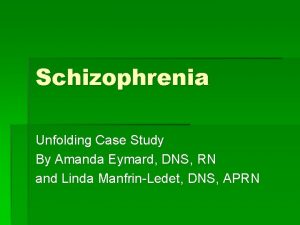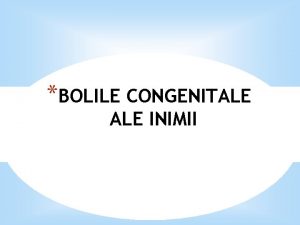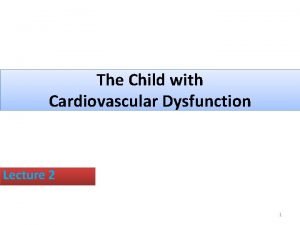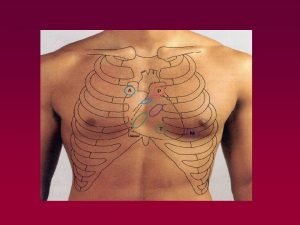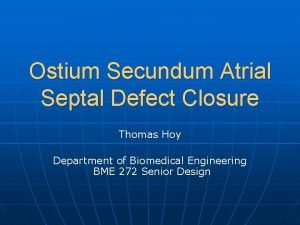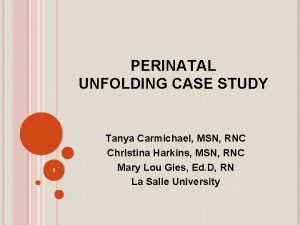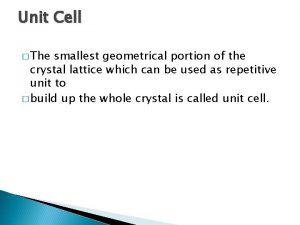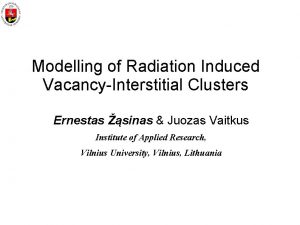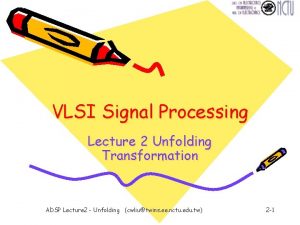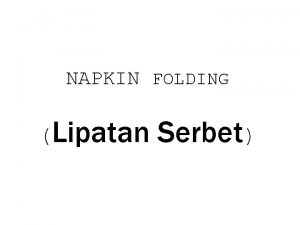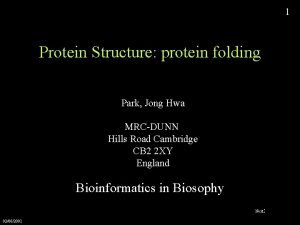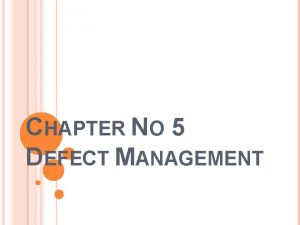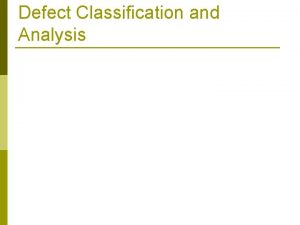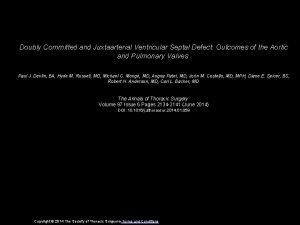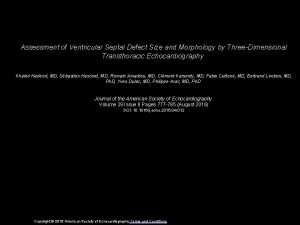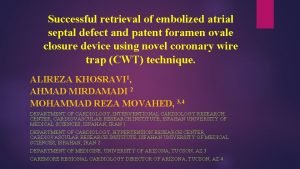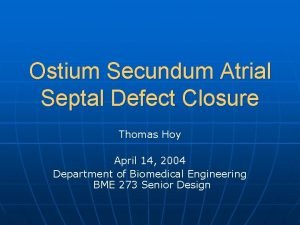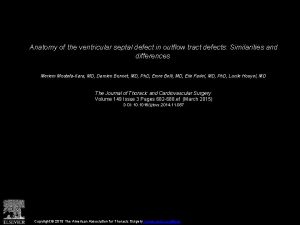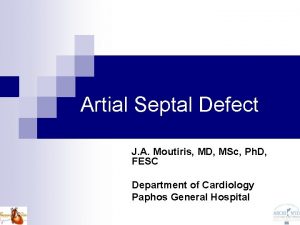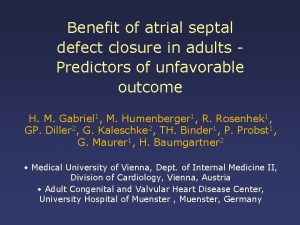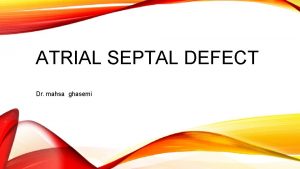NUR 213 Ventral Septal Defect Unfolding Case Study















- Slides: 15

NUR 213 Ventral Septal Defect Unfolding Case Study Developed by Benita Beard, MSN, RN Brenda Stepp, MSN, RN

Outcomes for Case Study � Determine current best practice for nursing and collaborative care strategies in the treatment of individuals with ventral septal defect. � Determine pharmacological considerations related to the management of individuals with a ventral septal defect. � Incorporate principles of growth and development, prioritize the plan of care for the family of and the individual with a ventral septal defect. � Determine other physiological and psychosocial concepts and/or exemplars related to ventral septal defect.

Outcomes for Case Study � Determine the incidence, etiology, populations at risk, and epidemiology of ventral septal defect. � Determine assessment findings and diagnostic testing related to ventral septal defect. � Review fetal circulation and newborn assessment. � Recognizing cultural diversity, incorporate the nursing process in providing primary, secondary, and tertiary care for, and prevention of, ventral septal defect.

What if ? � Baby Girl H was admitted to the Well-Baby Nursery at 0742. � Admission Data: Temp: 97. 2 ®; Heart Rate: 144; Respiratory Rate: 42

What else do you want to know? � � � Maternal History: 24 y/o Hispanic female, g 2 p 1, 37 weeks by ultrasound, 2 months prenatal care through local health department, O+, Rubella equivalent, HIV Negative, Negative history for drugs, alcohol, smoking; Group B Strep Negative; Questionable Rubella exposure @ 8 weeks gestation Labor History: Delivered vaginally, membranes ruptured X 4 hours with clear fluid, 1 st stage 12 hours, 45 minutes 2 nd stage; no episiotomy or lacerations; Stadol 1 mg administered 2 hours prior to delivery Other significant information: plans to breast feed; baby bonded for 15 minutes post delivery before transfer to nursery; Father present; speaks limited English but father speaks fluent English

What else do you want to know? � Weight was 6 lb 2 oz: 18 inches � Apgar scores: 7; 9 � Other assessment findings: Questionable benign murmur noted upon initial assessment; weak cry; color pink with acrocyanosis; Dubowitz 37 weeks; void and stool noted upon admission � Routine meds administered

Discharge Data � Discharged at 36 hours of age with both parents and 3 year old brother. � Weight 5 lbs, 11 oz � No jaundice noted � To return to pediatrician’s office in AM for weight and color check

2 Month Check-Up �Baby Girl H (Maria) was brought to the Pediatrician’s office for her “baby shots” �Weight is 7 lbs 8 oz; T: 97. 2 Ax, HR 156, RR 48; Color pale; appears somewhat listless during exam �Immunizations administered

What education/follow-up is indicated based on these assessment findings? � Nutritional Assessment: Maria is breast fed but continually falls asleep during feedings. Maria feeds every four hours for a total of 10 to 15 minutes each feeding. Awakes at least twice during the night to feed. � Bonding: Mother is very attentive, smiles at Maria and talks to her during assessment.

Follow-up �Weight check in 2 weeks �Feedings every two to three hours �Other diagnostics that might be indicated?

2 week follow-up visit � Weight is 7 lbs 10 oz; T: 97. 2 Ax, HR 164 while sleeping, RR 52; Color pale, skin cool and dry except on forehead which is sweaty; sleeps during exam but weak cry noted during lab draws; Murmur present; Pa. SO 2 94%

Diagnostics � Ultrasound of heart reveals large Ventral Septal Defect � Labs: Hct 42, HGB 17 � Plan is to send to pediatric referral center for Cardiac Catheterization

Care of the Child Undergoing a Cardiac Catheterization �Pre-Procedural management �Post-Procedural management

Follow-Up Visit with Cardiologist � Assessment Findings: Weight 7 lbs 6 oz; T: 97. 0 Ax, HR 176 while sleeping, RR 58; Color remains pale, skin cool and dry at time of exam; Hard to arouse during exam; Murmur present; Pa. SO 2 93% at rest

Plan of Care for the Child with Heart Failure � Nutritional Management � Medical Management � Other Medical and Nursing Strategies that should be considered in the management of a child with heart failure related to a congenital heart defect � Teaching Needs
 Unfolding clinical reasoning case study
Unfolding clinical reasoning case study Delusional thinking
Delusional thinking Coarctatie de aorta definitie
Coarctatie de aorta definitie Nursing management of atrial septal defect
Nursing management of atrial septal defect Crocodin
Crocodin Atrial septal defect
Atrial septal defect Qsen unfolding case studies
Qsen unfolding case studies Metal deficiency defect
Metal deficiency defect Schottky defect and frenkel defect
Schottky defect and frenkel defect Vacancy defect and interstitial defect
Vacancy defect and interstitial defect Unfolding in vlsi signal processing
Unfolding in vlsi signal processing Apakah yang dimaksud dengan lipatan serbet makan
Apakah yang dimaksud dengan lipatan serbet makan Expasy
Expasy Poetry time
Poetry time Best case worst case average case
Best case worst case average case Project failure case study
Project failure case study

